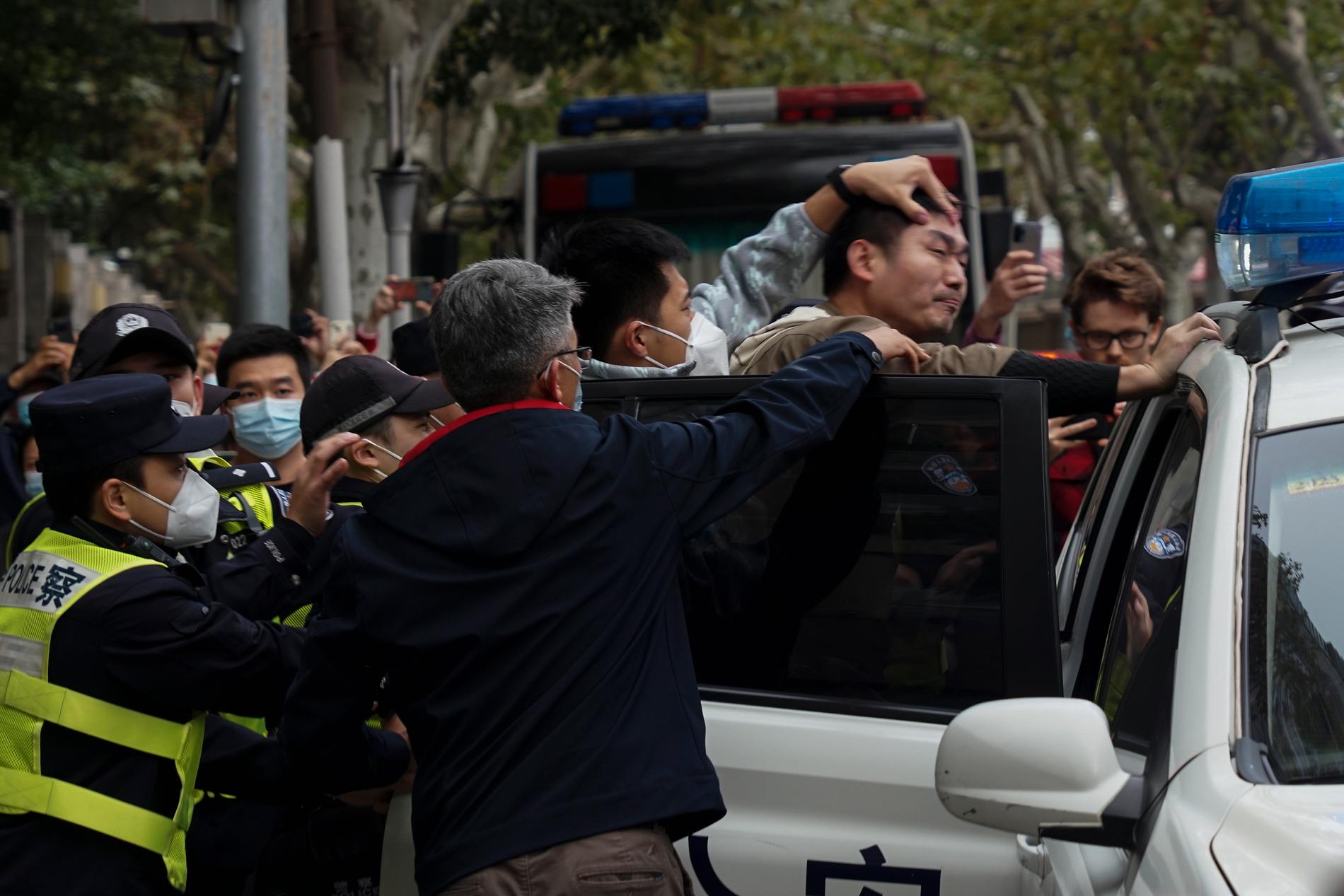Chinese police are using facial recognition, location data and more to crack down on and arrest participants in large demonstrations across the country.
It has broken out for many Chinese after nearly three years of strict coronary restrictions. In many cities there are large demonstrations demanding an end to lockdowns and greater political freedom. The number of protesters is higher than seen in many decades.
Beijing has announced that it will crack down on protesters, immediately deploying an impressive security apparatus. State-of-the-art surveillance is being used to track down activists, says a human rights lawyer who offers his services free of charge to protesters.
– In Beijing, Shanghai and Guangzhou, the police appear to have used very advanced methods. In other cities, they appear to have relied on surveillance cameras and facial recognition, says Wang Shengsheng, who lives in the industrial city of Zhengzhou.

Contact random passers-by
Beijing police may have used location data from people’s cellphones, whether it was picked up by on-site scanners or via corona certificates scanned by taxi customers heading to demonstration sites.
– Many of those who called me from Beijing were confused as to why the police contacted them, when frankly they were just passing through. We don’t quite know how the authorities did it, Wang says.
He has received more than 20 phone calls in recent days, from protesters or relatives of those arrested. You have heard mostly of arrests that lasted less than a day.
Police access encrypted accounts
Protesters who contacted her also had the police chasing her. In Shanghai, police reportedly confiscated the phones of anyone who contacted Wang. Callers from Guangdong province said their accounts on the Telegram encrypted messaging service had been hacked by police.
Friends of protesters arrested in Beijing say they saw the arrested Telegram accounts were active while in police custody, suggesting police may have accessed them.
Encrypted chat groups for protesters are on the alert to find police detectives. Groups can only be used with virtual private networks, so-called VPNs, which are illegal but very common in China. The same goes for foreign social media, which are also used to disseminate information about demonstrations.
Released, but without mobile phone
Protesters encourage each other to erase all evidence of their participation in the demonstrations, in case the police should check them. Several protesters are released from police custody, but without a cellphone: the authorities keep it. The chat groups also share tips and legal advice on what to do if you are questioned, arrested or have your phone confiscated.
Social media in China is heavily monitored and requires full names to be registered. This makes it easier to find users posting demo content. Also, the police officers just go around filming the protesters.
However, strict coronary restrictions can make police work difficult. A protester tells AFP news agency that she was summoned to a police station in Beijing to give an explanation about what she had done, but she was sent home because she hadn’t taken the corona test.
No right to privacy
Chinese protesters also note that the authorities have a different interpretation of their rights than they do.
– What is the right to privacy? You don’t have it, a policeman told a 17-year-old protester.
Many protesters had never taken part in anything like this before and lack the experience and organizational skills to build a larger movement. Coupled with highly sophisticated technology – the Chinese expect facial recognition to be widely used – the authorities therefore have plenty of opportunities to quell dissatisfaction.
– When people go missing or killed in ordinary criminal cases, we don’t see such advanced tracking technology. But it appears to be in use against demonstrations, Wang says.
It is sad that such technology is only used for such purposes.
– If our phones can be seized and manipulated by the authorities, if they can access our social media accounts without our consent, what kind of freedom are we really left with?
WATCH VIDEO – THE BIGGEST RIOTS IN 30 YEARS:


